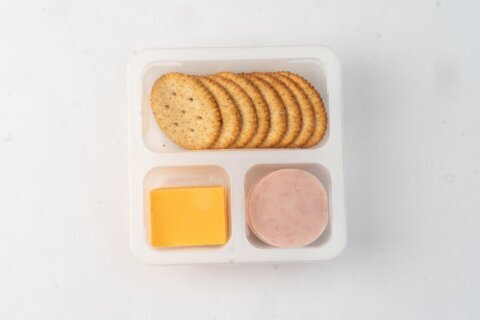As summer vacation winds down in August, millions of children nationwide are gearing up to head back to school. Among the many things parents worry about — such as immunizations, sports physicals, school supplies and playground safety — packing a healthy, nutritious lunch (that kids will actually eat!) is at the top of the list.
Combating Childhood Obesity: It Begins With School Lunches
With the rising tide of obesity in the nation over the last 30 years and subsequent rise in related morbidities, it’s not only extremely important that children eat healthy, balanced meals throughout the day — it’s imperative. And eating a nutritious school lunch is key to helping minimize the child obesity epidemic. There’s clear evidence that inception of good eating habits in childhood not only leads to better eating habits as adults, but also less risk of obesity. Because of this, it’s critical that parents stay involved with the nutritional choices children make as they grow into their teens.
The National School Lunch Program provides guidelines regarding the nutritional content of meals offered through schools, including the caloric content, fat content and micronutrients such as calcium, iron and vitamin A. These guidelines are broad, and many foods that may be considered unhealthy still might fit into these guidelines. However, the new guidelines from 2009 suggest increased portions of fruits, vegetables and whole grains.
A Team Effort: Involve Your Children in the Meal-Plan Process
The first step to packing nutritious lunches is to sit down with your children and review the weekly lunch menu that’s offered at their school. I have personally done this with my son, so I know from experience it works well. This strategy gives parents a great opportunity to discuss the benefits of different meal options and why certain foods may be healthier than others. Plus, involving the child in any decision-making process typically leads to better outcomes and acceptance — and the meal-plan process is no exception.
Ideally, packing your children’s lunches would be the best way to ensure they eat a balanced lunch filled with one full serving or more of fruits and vegetables. Rotating food options from a prior agreed-upon plan that was formulated with your kids can help decrease boredom and ensure they actually eat the packed lunch. You can also ask your children which fruits and vegetables they would enjoy eating for lunch; however, you may have to use your ingenuity to make the healthy foods they choose more acceptable or kid-friendly. For example, a sliced up apple may be much more appealing than a whole one. Although kids are notorious for begging for delicious (and sugar-loaded) drinks with their meals, the ideal beverage choices for lunch are water or low-fat, unflavored milk. If you need to pack juice, choose a 4 to 6 ounce bottle of 100-percent juice.
If your child is a grazer, meaning he or she eats small portions often, or if you are unable to pack an appropriate lunch, packing a snack can help meet your child’s nutritional and caloric goal. Since children are active, growing and can go long hours without eating at school, snacks — like a sandwich, some trail mix or a whole food-based snack bar — can be ideal options in order to provide some extra supplementary nutrition. Just make sure to follow the snack guidelines set by your child’s school! And for those children who opt to eat a school-offered lunch, getting to know the weekly menu and discussing the meal options with your child will help ensure a more nourishing school meal. It’s also important to note that if your child has concerns for food allergies, it’s crucial to alert the school authorities ahead of time. A letter from your physician outlining your child’s food allergies is the best way to ensure adequate support from the school.
Eating Habits Start Early: Parents, Practice What You Preach
Not only do children establish their eating habits early on in their lives, often around age 6, but they also mirror their parents in a variety of habits, which is why it’s critical for parents themselves to practice healthy eating and meal-planning techniques at home. With the new school year starting up, it’s the perfect time to reflect back on your eating habits as parents to ensure better health for yourself and your entire family. This reflection process can be an incredible teaching moment for kids, and it’s a great way to engage with your child on the topics of optimal nutrition, food moderation, portion size and overall long-term health.
When it comes to devising a game-plan for healthy, nutritious school lunches, don’t wait! The sooner you start planning, the better. You should also make sure to pencil in your pediatrician for a well-child visit to discuss concerns or questions regarding school meals or to enlist the help of a pediatric dietitian who can provide in-depth information regarding meal plans and healthy options.
More from U.S. News
Healthy Snacks for When You Feel Hangry
10 Ways to Live Healthier and Save Money Doing It
11 Ways Healthy Community Design is Working
A Parent’s Guide to Packing Healthy Back-to-School Lunches originally appeared on usnews.com







